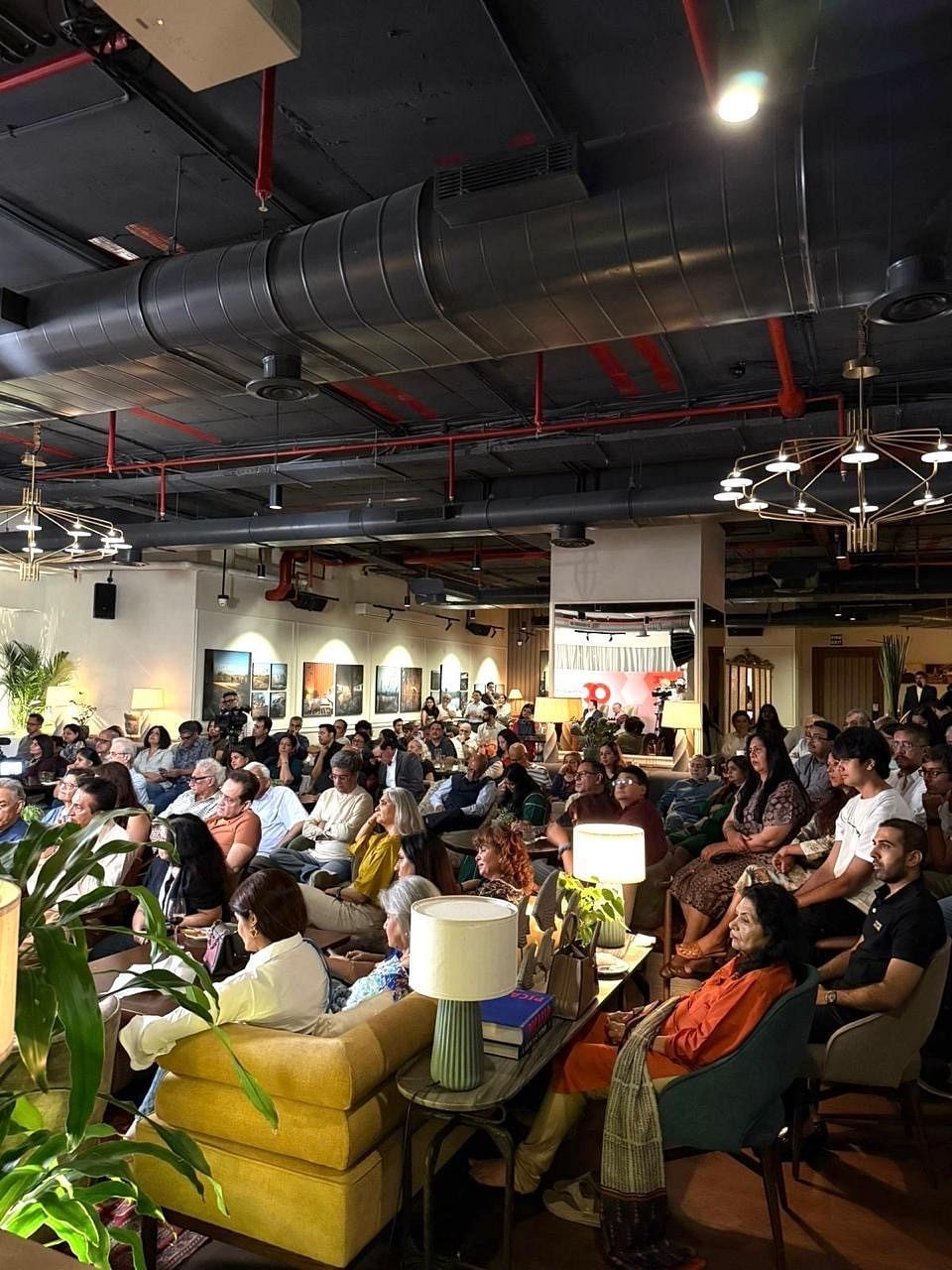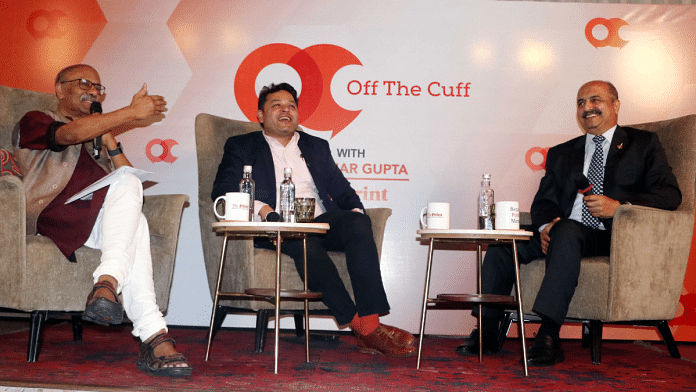New Delhi: Operation Sindoor has brought a significant paradigm shift in India’s air power approach, Air Chief Marshal V.R. Chaudhari (retired) said, calling it a clear demonstration of India’s ability to strike decisively and precisely.
“We hit them hard, where it matters,” the former Indian Air Force (IAF) chief said at Off The Cuff, hosted by ThePrint’s Editor-in-Chief Shekhar Gupta and Deputy Editor Snehesh Alex Philip in Mumbai, adding that the operation achieved its strategic aims with precision and intensity.
The IAF, he said, was given unprecedented freedom during the operation, unlike in the past conflicts. “Op Sindoor allowed full freedom to use air power the way it was always envisaged and the results are there for all to see.”
The shift toward using air power without the fear of escalating conflicts is set to fundamentally alter the way military engagements unfold in the subcontinent, he added.
Referring to the airstrikes on 10 May, which targeted enemy air bases, ACM Chaudhari (retd.) said the IAF demonstrated “pinpoint accuracy and ferocity,” paralysing the adversary and sending a strong message. “We hit them where it hurts the most.”
As for the speculation that India had struck Kirana Hills or Pakistan’s nuclear facilities during Operation Sindoor, the former IAf chief reaffirmed Director General of Air Operations (DGAO) Air Marshal A.K.Bharti’s assertion that “no such target was hit.”
Regarding the reports of IAF aircraft losses during the operation, he gave a brief response: “It is best to keep the enemy guessing.”
The former air force chief stressed the importance of avoiding false narratives and propaganda when it comes to the role of citizens during wartime. The people should follow government instructions, cooperate during measures like blackouts and steer clear of unhelpful chest-thumping, he added.
A look at the future
The former air chief discussed broader issues, ranging from the squadron gap and emerging technologies like loyal wingmen to the IAF’s evolving position on the proposed integrated theatre commands.
ACM Chaudhari (retd.) called the sanctioned strength of 42 squadrons outdated, suggesting that the real requirement may now be closer to 60 given current and emerging threats.
“The future of the IAF rests on the timely induction of Tejas Mk 1A, Tejas Mk 2 and AMCA,” he said, adding that the industry must now take the lead in ensuring delivery schedules are met.
Currently, the IAF is down to 31 fighter squadrons on paper against a sanctioned strength of 42. This number is set to go down further next year when two remaining squadrons of the MiG 21 Bison, already operating as one, are phased out.

Regarding concerns over adversaries acquiring fifth and sixth-generation fighters, he noted that while the true capabilities remain unclear, they are expected to be more advanced, making it imperative for the Advanced Medium Combat Aircraft (AMCA) to be rolled out at the earliest and treated as a “national task.”
India has approved the AMCA programme execution model, under which the state-run Hindustan Aeronautics Limited (HAL) will have to bid, along with private firms, to bag the contract. The Aeronautical Development Agency (ADA) is set to execute the programme through industry partnership.
On aircraft engine development, he said it remains one of the most complex engineering challenges. “While the Kaveri engine has made progress, no private player in India has yet developed an engine capable of generating 100 kN of thrust at scale,” he added.
Further, on command structures and jointness, ACM Chaudhari (retd.) outlined the IAF’s position on theatrisation, saying “the strength of the IAF is inadequate to be divided.” He stressed the importance of maintaining “centralised command, distributed control, and decentralised execution,” a structure that ensures efficiency with IAF’s restricted resources.
The discussion also touched on future technologies like the loyal wingman concept in the IAF’s context. Explaining the concept, he said it involves a manned fighter being accompanied by an unmanned aircraft with comparable capabilities.
“It protects the pilot, but the cost-benefit analysis is still debatable,” he noted, pointing to the high capital costs, complex AI integration and demanding software requirements.
Also Read: Very bad quality data in India, Consumer Survey 2017-18 was worst, says economist Surjit Bhalla







